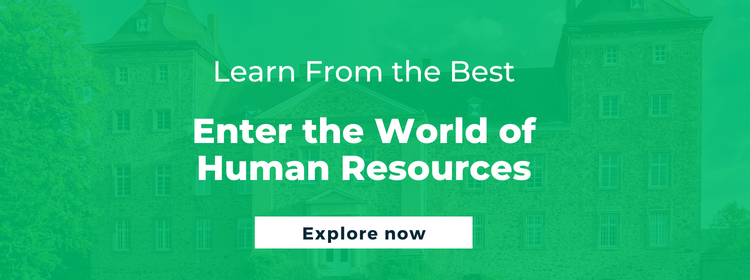Choose From the Top 7 HR Analytics Tools for Your Workforce Needs

From recruiting top talents to onboarding new hires to developing and maintaining a quality workforce, Human Resources (HR) management is responsible for all critical human capital-related tasks in an organization. Also, in a climate of uncertainty and change, it has become a game-changing function. Moreover, given their gamut of responsibilities, HR professionals need HR analytics tools to help them operate effectively. Therefore, these tools enable them to make informed hiring decisions, transform workforce processes, foster healthy work culture, and enhance business outcomes.
However, with the number of tools available in the market, choosing the right one for their organization can be a tough decision for HR professionals. Furthermore, to help them make a wise decision, we have compiled a list of the top seven HR analytics tools, along with their features, benefits, and disadvantages. However, let’s first start by defining HR analytics.
What is HR Analytics?
HR analytics, also called people analytics, is the process of collecting and analyzing data about a company’s employees with the goal of improving key business and employee outcomes.
HR analytics use a wide range of data including employee performance metrics, HR department records, employee surveys, and external data such as economic indicators or industry benchmarks. Analyzing this can provide insights into topics such as employee turnover, training effectiveness, compensation, and workforce demographics.
Organizations can leverage HR analytics to make informed decisions about talent acquisition, performance management, employee engagement, and other aspects of human resources management. Moreover, it can also help identify areas for improvement and optimize HR policies to support organizational goals.
ALSO READ: What is HR Analytics? How is it Important for Employee Retention?
7 Best HR Analytics Tools in 2023
Depending on the requirements, here is a list of seven HR analytics tools, which help HR professionals evaluate employee engagement, turnover, and performance, improve decision-making, and cultivate a streamlined work environment.
1. Oracle Analytics
With the Oracle tool, HR professionals get instant access to actionable workforce analytics to drive better decisions regarding workforce diversity, employee attrition and retention, talent acquisition, and compensation.
Features
- Data discovery and visualization
- Report output and scheduling
- Leave tracking
- Talent management
 Pros
Pros
- Easy to import any type of data through this tool
- Shows real-time reporting data
- Effective customer support
Cons
- Needs improvement in the user interface
- No sync between the advanced analytics function and Essbase data sources
2. Crunchr People Analytics
Crunchr is a Software as a Service (SaaS) tool for conducting people analytics. Moreover, it provides pre-configured metrics and insights for use in all HR-related areas. This includes recruiting, retention, diversity and inclusion, performance, rewards, spans and layers, internal mobility, engagement, and succession planning.
Features
- Automated data collection
- Data analysis
- Data integration
- Predictive analysis
Pros
- User-friendly and easy to use
- Innovative and customized report generation that is easier to understand
Cons
- Takes time to set up the settings of this tool
- Does not automatically import or translate data from all existing systems
3. Qualtrics People Analytics
Using Qualtrics, organizations can employ real-time data to understand their employees and the factors that drive their performance. Moreover, it supports HR professionals with the data that are connected with the employee lifecycle, from the day employees join a company to the moment they leave.
Features
- Customer experience management
- Employee insights
- Digital experience management
- Customer and market research
Pros
- Effective analytics tracking
- Easy to use the backend for creating surveys
Cons
- Takes time to load when there is a large amount of data
- Inefficient customer service
4. IntelliHR
IntelliHR is a people management platform that can align, manage, and enable the company’s staff, and is designed for HR professionals, leaders, and managers. Moreover, it empowers HR leaders to create a streamlined work-life balance for their employees, teams, and companies.
Features
- Automated workflows
- Performance management
- Human Resource Information Systems (HRIS)
- Employee Engagement
Pros
- User-friendly interface
- Automate performance reviews
Cons
- Zero live customer support and shift scheduling
- No option for paid time-off tracking, shift scheduling, and live customer support
5. Hibob HRIS
Hibob HRIS is a human resource management system that was developed with the goal of enhancing the employee experience with a particular emphasis on small and medium-sized organizations.
Features
- Human resource management
- Payroll management
- Leave and attendance management
- Employee self-service
Pros
- Easy-to-configure settings
- Automated tasks, emails, and calendar events
Cons
- More expensive than other tools
- Inefficient customer support
6. Sift
Sift is a social search engine that aims to assist sales, business operations, information technology, professional services, and internal communications teams in locating colleagues and connections across the workplace network.
Features
- Payment protection
- Content integrity
- Account defense
Pros
- Easy-to-use settings
- Satisfactory customer service
Cons
- Slow user interface
- More expensive than other tools
7. Sprout Solutions HR
Sprout is a SaaS firm that assists small, medium-sized, and large enterprise businesses to expand by providing a suite of backend solutions that address end-to-end HR challenges.
Features
- Attendance tracking
- Attendance management
- Payroll reporting
- HR management
Pros
- Convenient user interface
- Strong customer support team
Cons
- No calendar view or summary to see who has filed a leave
- Takes time to create a new employee profile and upload bulk data
What is the Best Way to Choose HR Analytics Tools?
 Now that you are familiar with these HR analytics tools, you need to select the most appropriate one for your business. Here are the steps that will help you do that.
Now that you are familiar with these HR analytics tools, you need to select the most appropriate one for your business. Here are the steps that will help you do that.
1. Understand Company Needs
The first step is to assess the areas where the business needs software support. These can include monitoring employee performance, obtaining reviews, and gauging satisfaction.
2. Examine Software Capabilities
Businesses can expand their operations with the help of software tools. As your company grows, the HR software you use should be capable of handling the extra workload. Therefore, choose the analytical tool which has expanded capabilities for developing businesses that can handle more users and staff.
3. Consider the Required Functionality
While making a decision, it is important to take into account the software’s essential features and compare these to the requirements of your HR department. For instance, if you require actionable Business Intelligence (BI) that has been compiled from a variety of data sources, you should go with a system that provides effective BI tools.
4. Evaluate Storage Requirements
It is important to have a clear image of the data storage requirements that your business has. Therefore, if you want a higher staff headcount, you should select the HR analytics tool that is capable of handling larger data sets and has additional capabilities for people analytics.
Accelerate Your Human Resources Career with Emeritus
Installing the right HR analytics tools within a company’s HR framework is imperative. However, having the ability to use this technology requires a deep understanding of your field. Enhance your HR knowledge and learn the right, in-demand skills with online HR courses on the Emeritus platform to help you succeed in this career.
Write to us at content@emeritus.org
















